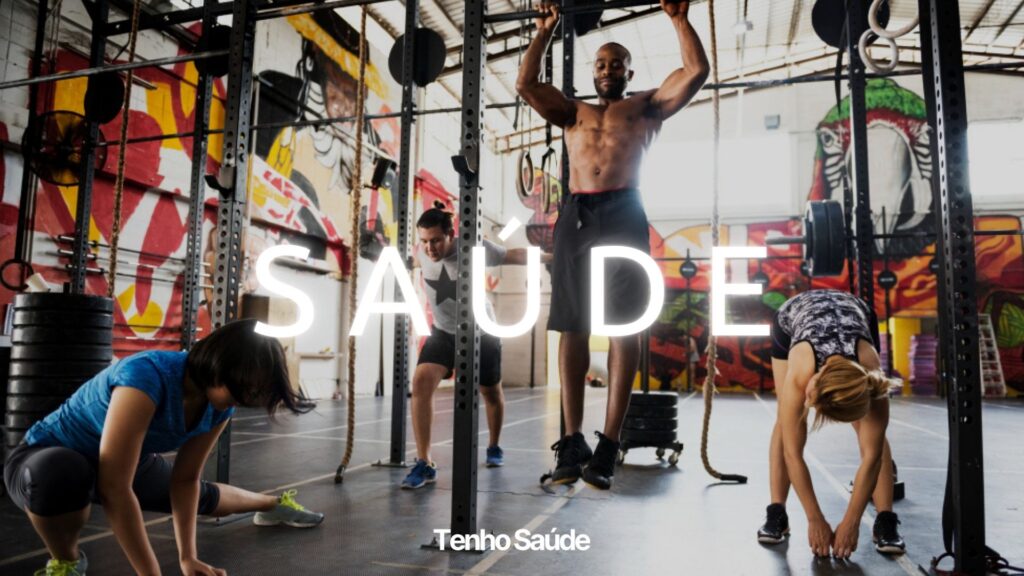The first step to knowing how many days you should train per week is to identify your goal and what types of training you should do, combining strength training, cardio and rest. Check out 6 types of goals below:
To gain muscle

Weight training: 5 days, adding more weight and reps.
The ideal for anaerobic training is to maintain a frequency of 5 days per week, but in this modality the result is not due to the frequency but rather the high intensity.
The best way to gain muscle is by lifting weights with the maximum number of repetitions recommended by your personal trainer, who will analyze your physical condition.
During the repetitions of each exercise, go until you reach “failure”, that is, until you can no longer lift the weight. Train your muscle until fatigue, always under the supervision of a professional.
Cardio: 1 day.
For those who want to build muscle, they should be careful with the amount of cardio they do, as it can catabolize the muscles.
It is recommended to practice the training HIIT (High Intensity Interval Training). You will promote your endurance and cardiovascular quality while training fast-twitch muscle fibers, helping to improve your power.
HIIT: what it is, benefits, types and how it works (burns a lot of fat)
Rest: on average 2 days per week
It is recommended to do strength exercises for two consecutive days and then rest for a whole day, repeating this sequence.
To gain strength

Weight training: 3 to 5 days per week:
“Being strong doesn’t mean you have big muscles, it means you can engage all your muscle fibers to generate force.” McCall. Examples of this are bodybuilding athletes and weightlifting athletes who practice different workouts and activities.
To achieve this goal, you should consider concentrating on exercising one body part per day, for example: Monday on the upper body and Tuesday on the lower body.
To gain strength, focus on lifting increasingly heavier weights, pausing between each set to recover. Seek help from your personal trainer to create the best plan based on your current fitness level.
Cardio: 1 day:
Cardio and aerobic training can offset strength gains, so it's a good idea to take a training day to focus on increasing your heart rate and efficiency.
Rest: 1 day of rest and 1 day to improve mobility, per week:
When you lift a lot of weight frequently, it's easy to lose some of your mobility, so it's best to choose one day to do exercises that strengthen mobility and another day to rest.
To have more resistance

During exercise, we can notice that in some cases, the body is fine and can continue to perform the exercise, but the heart is at its limit, this is a sign of low resistance.
Weight training: 2 to 5 days, focus on high reps:
This modality is similar to the previous topic (gaining strength). The only change is to focus on including more repetitions to develop more resistance, making your muscles work for longer. So don't focus on the heaviest weight, but rather on performing the greatest number of repetitions, on average 15 to 30, depending on your fitness level.
Multiple consecutive exercises with minimal rest time between each are recommended to train the muscle fibers responsible for resistance exercises.
Cardio: 3 days
Cardio training is important for those who want to gain endurance, making your heart get used to the intensity of the exercises for longer. Always focusing on increasing the distance and time as much as possible.
Rest: 1 day
Make sure you take at least one day of rest to let your body recover.
To get faster

Bodybuilding: minimum 2 days a week
If your goal is to be faster, you cannot neglect your upper body, as they both work together.
Focusing on your glutes can improve your speed when running and cycling. Talk to your trainer to create a training plan that includes exercises that combine strength and speed.
Cardio: 3 days
High intensity interval training is recommended for speed training, also using HIIT (High Intensity Interval Training). Thus exercising type II muscle fibers, responsible for providing more speed.
HIIT: what it is, benefits, types and how it works (burns a lot of fat)
It is also recommended to choose a day to train other types of cardio, talk to your personal trainer.
Rest: 2 days
HIIT workouts are intense, so it is recommended to take a few days off during the week.
To stay in shape and have quality of life

Bodybuilding: 2 to 5 days, moderate intensity.
If your goal at the gym is simply to stay healthy, invest in strength and resistance training that works your entire body. Opt for combination exercises that work several muscle groups simultaneously, achieving different movement patterns, such as pulling, pushing, squatting and lunging.
These exercises will strengthen your fitness, generating several benefits in your daily life, such as having better quality sleep.
In a study¹, two groups were analyzed: A trained 3x a week while group B trained 6x a week, the amount of exercises was the same for both groups. Group A obtained the same results as group B.
Revealing that the volume (total number of sets and repetitions) of resistance exercises matters more than the number of days practiced. So the fewer days you train in the week, the more exercises you will have to practice in your workout.
In this modality, the intensity is moderate, meaning that you don't need to focus on lifting the maximum weight and repetitions, but rather the recommended amount to achieve health without putting your body at risk.
Cardio: every day.
The recommendation is to be in “movement” every day since your goal is to stay healthy and not lose weight. Choose light cardio activities at the gym or in your daily life, such as climbing stairs, walking or running in the park.
Rest: 1 day of rest and 1 day to improve mobility, per week:
Considering the recommendation to do light cardio activities daily, you don't need to be afraid to take a rest day if you're sore or tired, as you're looking for health, not intensity.
To lose weight

Bodybuilding: minimum 2 days a week
Those who want to lose weight should do exercises that stimulate the muscles, at least three days a week, promoting fat burning and accelerating metabolism. Weight training stimulates the production of hormones, such as the “growth hormone”.
Unlike aerobic training, strength training stimulates muscle mass gain, and to lose weight healthily and quickly you must lose fat and gain muscle mass, which is important!
Cardio: 3 to 5 days
Cardio and anaerobic exercises are essential for those who want to lose weight in line with a healthy diet, as the formula for losing weight is to burn more calories than you consume in a day, and the exercises that do this most are those related to cardio.
For best results, choose short workouts that have higher intensity. Short workouts HIIT (High Intensity Interval Training) They are effective and very practical for burning fat and accelerating metabolism.
HIIT: what it is, benefits, types and how it works (burns a lot of fat)
Calculate BMI: Body Mass Index
Rest: 2 days
The trainings HIIT are intense, so it is recommended to rest the body, to help repair muscles and avoid injuries.
Precautions
Consult a personal trainer, who will assess your physical condition and create the best exercise plan according to your goals.
Never force your body. If you feel any pain or discomfort while performing an exercise, stop immediately and seek a professional to assess whether your posture is correct or whether there is an injury.
- Training volume, not frequency, indicative of maximal strength adaptations to resistance training: https://journals.lww.com/nsca-jscr/Fulltext/2018/05000/Training_Volume,_Not_Frequency,_Indicative_of.3.aspx









Как Biohacker Host улучшает ваши когнитивные функции с ноотропами
Biochemist: ноотропы в Москве